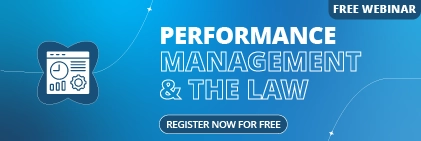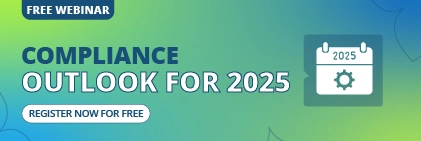Managing compliance nowadays can be extremely challenging.
You’re constantly juggling multiple frameworks, tracking endless deadlines, and trying to ensure your organisation stays on the right side of ever-changing regulations.
If you’ve ever found yourself drowning in spreadsheets, struggling to coordinate compliance activities across different departments, or losing sleep over potential audit failures, you’re not alone.
The good news? You don’t have to tackle compliance management with outdated tools and manual processes anymore.
The right compliance management software can transform your approach from reactive firefighting to proactive, streamlined operations. But here’s the challenge: with dozens of solutions flooding the market, each promising to be the ultimate compliance game-changer, how do you separate the genuinely useful tools from the overpriced, feature-bloated alternatives?
This comprehensive guide will walk you through everything you need to know about choosing compliance management software that actually fits your needs.
What is Compliance Management Software?
Compliance Management Software is a specialised platform designed to help you track, manage, and automate the complex web of compliance requirements that your organisation faces.
Rather than juggling multiple spreadsheets, emails, and filing cabinets, this software centralises everything into one organised system that actually makes sense.
It helps you stay on top of regulatory obligations by automating routine tasks, setting up alerts for important deadlines, and providing a clear overview of your compliance status at any given moment.
The software typically handles everything from policy management and risk assessments to audit preparation and regulatory reporting. It connects the dots between different compliance activities, so you can see how changes in one area might affect others.
Most importantly, it transforms compliance from a reactive scramble into a proactive, manageable process that integrates smoothly with your daily operations.
Why Do You Need Compliance Management Software?
If you’re still managing compliance with spreadsheets and email reminders, you’re probably familiar with that sinking feeling when you realise you’ve missed a critical deadline or can’t locate an important document during an audit.
Manual compliance management isn’t just inefficient – it’s genuinely risky in today’s regulatory environment where penalties can reach millions of dollars and reputational damage can last for years.
The regulatory landscape has become increasingly complex, with new requirements emerging regularly and existing ones constantly evolving.
What worked five years ago simply doesn’t cut it anymore. You’re now dealing with multiple frameworks simultaneously – perhaps ISO, and industry-specific regulations – each with its own reporting requirements, deadlines, and documentation standards.
Trying to manage this complexity manually is like attempting to conduct an orchestra whilst blindfolded.
Beyond the obvious risk of non-compliance, manual processes create hidden costs that eat away at your resources.
Your team spends countless hours on administrative tasks that could be automated, from copying data between systems to chasing colleagues for status updates.
You’re also likely duplicating efforts across departments, with different teams maintaining separate compliance records that never quite align. This inefficiency doesn’t just waste time – it creates inconsistencies that can trigger compliance failures during audits.
Perhaps most importantly, manual compliance management offers no real visibility into your organisation’s compliance posture.
You might think you’re compliant, but without proper tracking and reporting, you’re essentially flying blind.
Compliance management software gives you the transparency and control you need to confidently demonstrate your compliance status to auditors, regulators, and stakeholders whilst actually reducing the workload on your team.
Key Features to Look for in Compliance Management Software
When evaluating compliance management software, you’ll encounter a bewildering array of features.
However, certain core features separate genuinely useful solutions from glorified document storage systems. Here are the essential features you should prioritise:
- Centralised Repository – A single, secure location where you can store, organise, and access all your compliance documents, policies, and evidence without hunting through multiple systems or filing cabinets.
- Control Testing – Automated tools that help you test and validate your compliance controls regularly, ensuring they’re working effectively and providing audit trails for regulatory reviews.
- Integration Capabilities – Seamless connections with your existing business systems (HR, finance, IT) so data flows automatically between platforms without manual data entry or synchronisation headaches.
- Robust Reporting and Analytics – Comprehensive reporting tools that provide clear insights into your compliance status, highlight potential risks, and generate the specific reports your auditors and regulators require.
- Real-Time Monitoring – Continuous monitoring capabilities that track compliance activities as they happen, alerting you immediately when issues arise rather than discovering problems during quarterly reviews.
- A User-Friendly Interface – An intuitive, easy-to-navigate interface that your team will actually want to use, reducing training time and increasing adoption across your organisation.
- Audit Trail Management – Comprehensive logging of all system activities and changes, creating an unalterable record that satisfies auditor requirements and regulatory standards.
- Task and Workflow Automation – Smart automation that assigns tasks, sends reminders, and moves processes forward without constant manual intervention, ensuring nothing falls through the cracks.
- Role-Based Access Controls – Granular permission settings that ensure only authorised personnel can access sensitive compliance information while maintaining proper segregation of duties.
How to Choose the Right Compliance Management Software?
Selecting the right compliance management software isn’t just about finding the most feature-rich solution – it’s about finding the one that fits your specific needs and circumstances.
Follow these strategic steps to ensure you make a decision that serves your organisation well both now and in the future.
Step 1 – Understand Your Compliance Requirements
Before you even begin looking at software options, you need to conduct a thorough audit of your current compliance obligations and processes.
Start by listing all the regulatory frameworks, industry standards, and internal policies your organisation must adhere to, then identify the specific requirements, reporting deadlines, and documentation standards for each.
Consider how these requirements might change over the next few years, as regulations evolve and your business grows into new markets or sectors.
This foundational understanding will help you avoid the common mistake of choosing software that looks impressive but doesn’t actually address your real compliance challenges.
Step 2 – Check Vendor Reputation and Support
The compliance software market is filled with vendors making bold promises, so you need to dig deeper than marketing materials to understand what you’re really getting.
First of all, you should research the vendor’s track record by reading customer reviews, case studies, and industry reports, paying particular attention to how long they’ve been in business and their experience with organisations similar to yours.
Then you should evaluate their customer support offerings carefully, because when compliance deadlines are looming, you can’t afford to wait days for technical assistance.
Most importantly, you should look for vendors that offer comprehensive training programs, detailed documentation, and responsive support teams that understand compliance requirements, not just software functionality.
Step 3 – Examine Cost-Effectiveness
While price shouldn’t be your only consideration, you need to understand the total cost of ownership before making a commitment.
Look beyond the initial licence fees to consider implementation costs, training expenses, ongoing support fees, and any charges for additional users or modules you might need later.
Calculate the return on investment by estimating how much time and money the software will save through automation, reduced manual errors, and streamlined processes.
Remember that the cheapest option often proves more expensive in the long run if it requires extensive customisation, frequent workarounds, or doesn’t scale with your needs.
Step 4 – Scalability and Flexibility
Your compliance needs will inevitably change as your organisation grows, regulations evolve, and new requirements emerge, so choose software that can adapt alongside your business.
Assess whether the platform can handle increased data volumes, additional users, and new compliance frameworks without requiring a complete system overhaul. Look for solutions that offer modular functionality, allowing you to add new features or compliance areas as needed without disrupting your existing processes.
Consider the vendor’s roadmap for future development and their track record of updating their software to accommodate new regulatory requirements and industry best practices.
Step 5 – Look for a Strong User Community
A vibrant user community can be invaluable for getting the most out of your compliance management software and staying ahead of industry trends.
Active user forums, regular user conferences, and peer networking opportunities provide access to best practices, creative solutions to common challenges, and early insights into regulatory changes.
These communities also serve as an informal support network where you can get practical advice from other compliance professionals who understand your daily challenges.
Additionally, software vendors with strong user communities tend to be more responsive to customer feedback and more likely to develop features that address real-world compliance needs rather than theoretical requirements.
Conclusion
Choosing the right compliance management software is one of the most important decisions you’ll make for your organisation’s regulatory future.
The difference between an excellent solution and a mediocre one can mean the difference between seamless compliance operations and constant firefighting, between confident audit preparations and sleepless nights wondering if you’ve missed something critical.
If you’re looking for a compliance management solution that ticks all these boxes, Sentirent’s Compliance Management Software deserves serious consideration.
Built by compliance professionals who understand the daily challenges you face, Sentrient offers a centralised repository, robust reporting, and seamless integrations we’ve discussed, all wrapped in an interface that your team will actually want to use.
Remember, the investment you make in compliance management software today will pay dividends for years to come through reduced risk, improved efficiency, and the peace of mind that comes from knowing your compliance program is built on a solid foundation.
Read more about Compliance Management:
- NDIS Compliance Essentials: A Guide for Disability Service Providers
- 2025 Compliance Risks in Australia: All You Need to Know
- How to Integrate Compliance Software with Existing Business Tools
- Why Is Compliance Training Necessary For New Employees
- Compliance Training Everything Small Business Needs To Know





